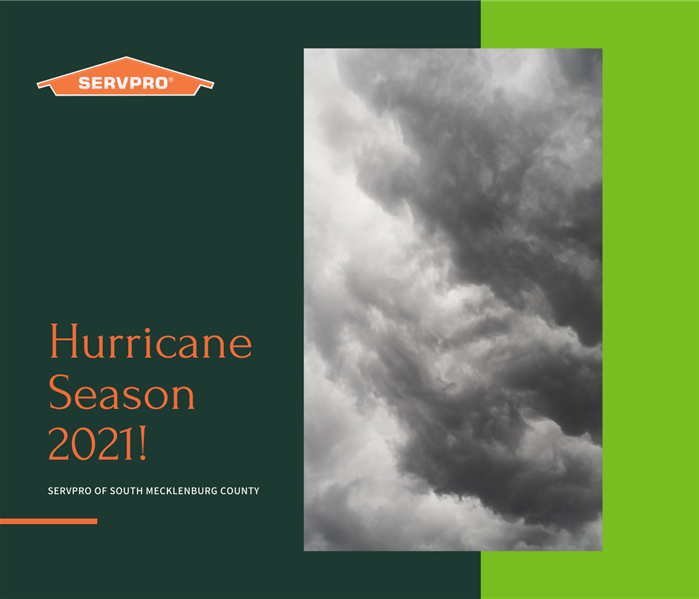Hurricane Season 2021!
10/14/2021 (Permalink)
2021 has been a year that has required all of us to continue to be flexible, patient, careful, and intentional. Even though events like the COVID 19 pandemic have received most of our attention lately, we have been in hurricane season for a few months now. It has been an active season for North Carolina. To save you some time researching ways to prepare, SERVPRO of South Mecklenburg County wanted to share some tips with you. Thank you, Chubb.com and Ready.gov for helping us share these wonderful tips with our SERVPRO of South Mecklenburg County neighbors, friends, and family!
Hurricane Prep Tips
When a major storm is coming, stay informed by following NOAA Weather Radio or your local news channels for updates. In addition, make sure to obey all orders if requested to evacuate by the authorities. Follow these 10 hurricane and storm preparation steps to keep your home and loved ones safe before disaster strikes.
- Make a plan
If evacuation is necessary, turn off all utilities and follow community disaster preparedness plans. Select a common meeting place or single point-of-contact for all family members. If you have pets, have a plan for their evacuation as well. - Secure the exterior
Trim large trees and shrubs and bring all outside patio furniture, potted plants, bikes, and toys indoors. If necessary, secure outdoor sculptures and larger furniture with burlap or blankets tied with rope to prevent damage. - Install storm shutters
Protect windows, doors, and skylights with appropriate shutters or impact-resistant glass. You can nail pieces of plywood to window frames as last-minute protection. - Check wall hangings and art
Make sure wall hangings are secure and take notes about your art collection and any existing damage. Make sure that art hung on outside walls is taken inside, and elevated off the floor. - Move your cars
Move cars to higher ground or park them in your garage against the garage doors. Do not park under trees, power lines, or in low-lying areas.
- Power up
Fill your car’s gas tank, charge your cell phone, test your generator and have plenty of fuel ready in case of power outages. - Unplug appliances
Move appliances and household fixtures away from exterior doors and window openings. Store them in cabinets or interior closets, and ensure they are unplugged to prevent power surge damage. - Store important documents
Keep important documents, such as legal papers, birth certificates, marriage license, financial papers, and insurance policy information, as well as valuables such as jewelry, in a safety deposit box or in a bolted safe in an interior closet in your home. Using a fire and water-resistant container is one of the best ways to prevent damage to these important documents. - Prep an emergency kit
Gather flashlights, a portable radio, extra batteries, non-perishable food, bottled water, cash, blankets, clothing, and toiletries. - Identify a shelter room
This enclosed area should be on the first floor, in the central part of the house with no windows. Avoid all unprotected windows and doors until the storm passes.
These helpful tips came from Chubb.com Want more tips? Go to Ready.gov and find more on our blog.
Want to know more about us? Please check out our other pages:
LinkedIn Facebook Instagram Twitter Angie's List BBB Youtube Pinterest






 24/7 Emergency Service
24/7 Emergency Service
